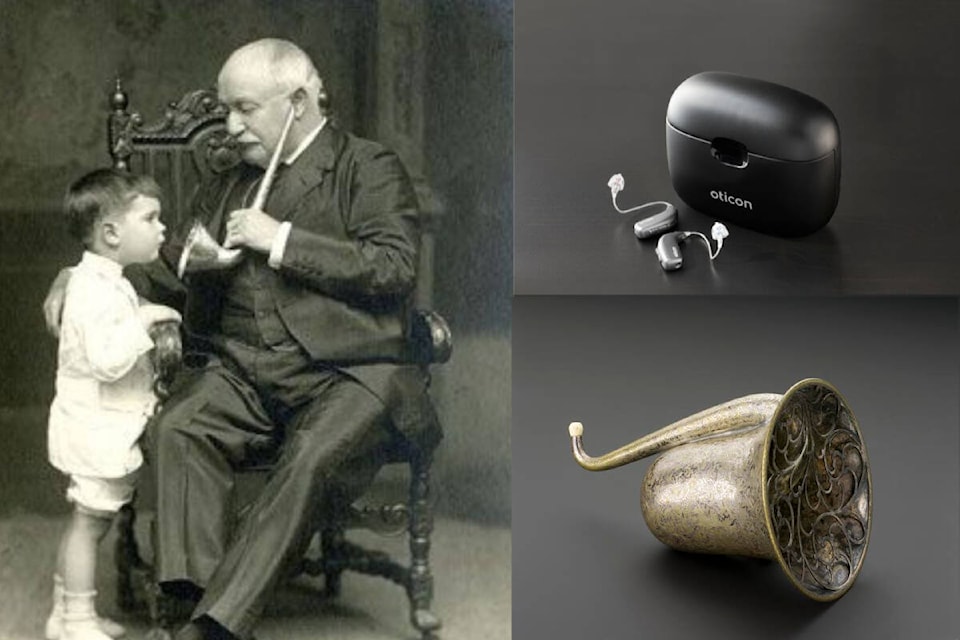Long before the modern hearing aid, the ear horn or ear trumpet was considered the most advanced hearing solution for those suffering from hearing loss. These early models are a far cry from the hearing aids we know and trust today, but knowing where hearing aids started can help us better appreciate just how far they’ve come over the decades.
Jennifer Hutchingame from Hear Right Canada’s team in Lacombe helps us take a glimpse into the history of the hearing aid and how they’ve changed over the years.
Acoustic hearing aids (1640 to 1898):
Early records show the first mentions of hearing devices in 1627 and describe an ear trumpet type device that helped people “thick of hearing.” These early hearing aid devices were anything but discreet by today’s standards but at the time they were considered advanced and were welcomed with open arms by those living with hearing loss.
Carbon hearing aids (1898 to 1939):
Electricity brought about changes in all aspects of society, including the very first electric hearing aids.
Looking nothing like the hearing aids of today, and typically the size of a lunch box, they came with different numbers of carbon microphones depending on the severity of hearing loss. Eventually these hearing aids became small enough to be worn around your neck or attached to your shirt but they were still notably larger and heavier than their modern equivalents.
Vacuum tube hearing aids (1921 to 1953):
From 1920 to the early 1950s vacuum tube hearing aids brought about a smaller, lighter hearing aid solution but also saw the invention of the largest and heaviest hearing aid ever made. The binaural model-model 10-A weighed in at 220 pounds and cost $2,250 – nearly $30,000 in today’s dollars. While heavy and outrageously expensive, the Model 10-A actually still works today, nearly 100 years later!
Aside from the massive Model 10-A , by the early 1950s hearing aids were small enough to be worn comfortably on the body.
Transistor hearing aids (1952 to 2005):
Vacuum tube hearing aids walked, so transistor hearing aids could run. By 1955 all hearing aids were transistor hearing aids, and by the 1960s they were finally small enough to be worn behind the ear.
Digital hearing aids (1996 to present):
The digital revolution launched a new era of hearing aids, with their power, functionality and practicality increasing dramatically very quickly. Smaller batteries and smaller internal components meant a much smaller overall device and we’ve continued to see improvements to design and quality.
Not only are today’s hearing aids practically invisible, society’s stigma’s around hearing loss and the use of hearing aids has also changed for the better. Modern devices fit within the ear itself and are designed to be discreet and comfortable enough to be worn all day.
Hear Right Canada offers a variety of hearing aids To find the right hearing aid for your unique needs and budget, book an appointment at Hear Right Canada online here or call 825-640-2014. You can also follow them on Facebook!
READ MORE:
